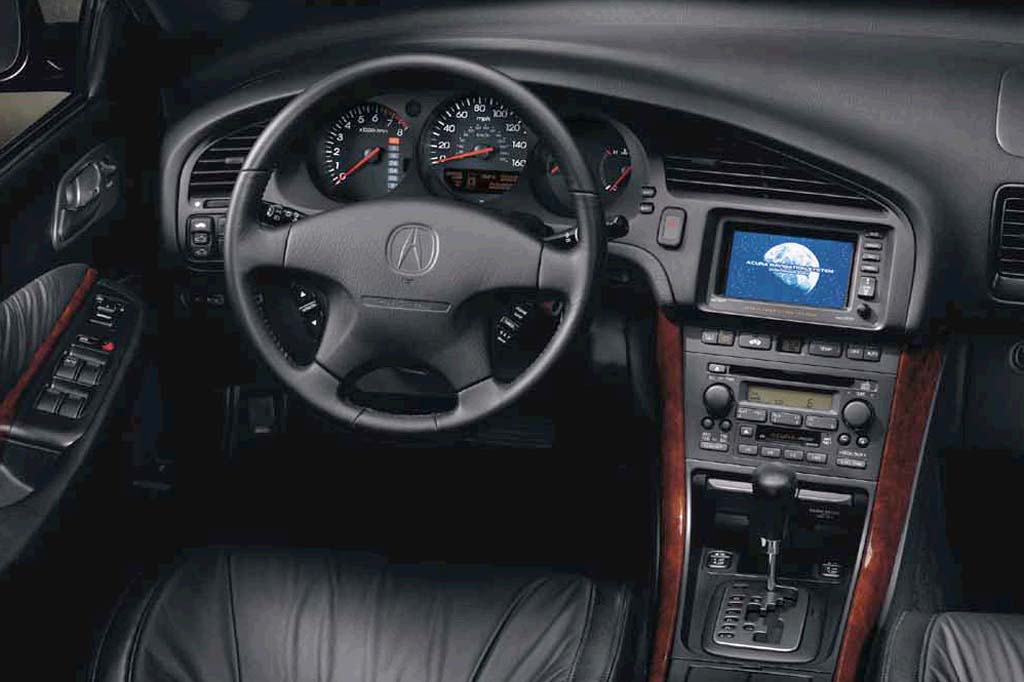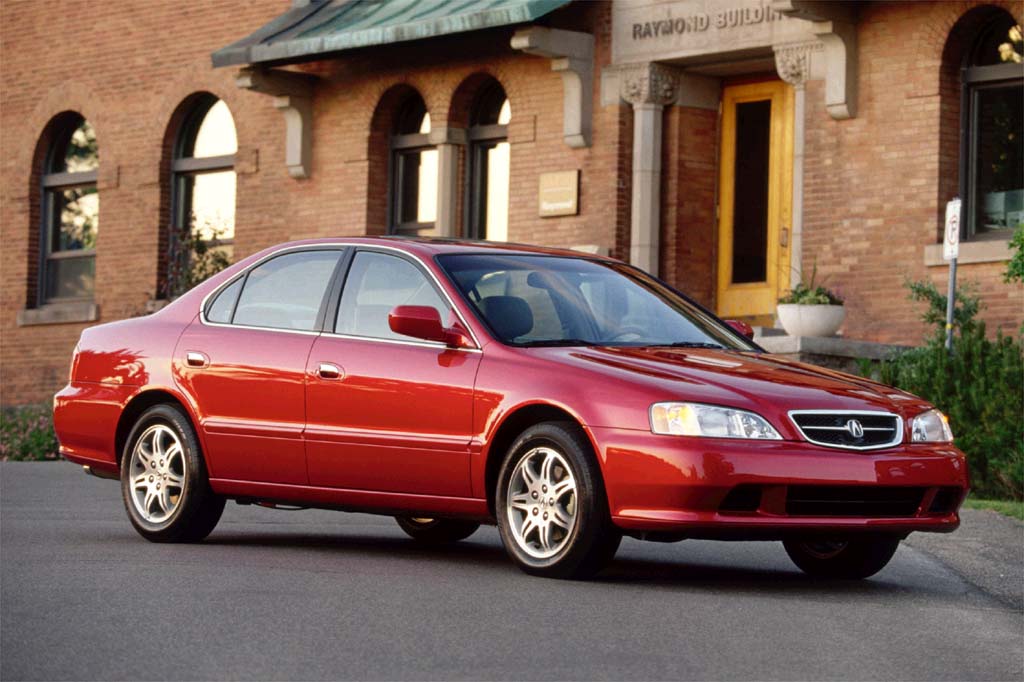| Premium midsize car; Built in USA |
|
|
| Good condition price range: $3,300 – $7,600* |

2000 Acura 3.2TL

2000 Acura 3.2TL

2001 Acura TL interior w/navigation system

2001 Acura TL

2001 Acura TL
| Pros: |
|
| Cons: |
|
Solidly built and impeccably finished, the TL equals or exceeds anything in its class for quality and utility. Its sporty nature should please the most demanding driver, though at risk of turning away entry-luxury buyers who expect Lexus-like isolation. With so many features for the price, the value-packed TL ranked as a Best Buy when new.
Overview
For 1999, the slow-selling, Japanese-sourced TL gave way to a slightly larger TL sedan. Built in the U.S., on the same chassis as the Honda Accord and the contemporary Honda Odyssey minivan, the near-luxury, front-drive TL slotted between the entry-level Integra and the luxury RL sedan. Rivals included the Audi A4, BMW 3-Series, Infiniti I30, and Lexus ES 300. A new, more powerful V6 engine replaced the previous five-cylinder, driving a four-speed automatic transmission that incorporated SportShift manual gear selection. Premium fuel was required. Seating five, the new TL came in a single, well-equipped model. Standard equipment included leather upholstery, heated front seats, and a power moonroof. A satellite-based navigation system with a color LCD dashboard screen was the only factory-installed option. All-disc antilock braking and traction control were standard, but side-impact airbags were not available, though they were at least optional on most competitive sedans.
Yearly Updates
| 2000 TL Acura tuned the TL’s V6 to deliver more low-speed power this year, and installed high-intensity-discharge headlights. A new five-speed automatic transmission ousted the four-speed, again including a SportShift manual shifting gate. Side-impact airbags for front seats became standard. Sensors could determine the size and position of the right front passenger, so the airbag would deploy only when necessary, not if a child was present. In that case, the dashboard’s front airbag would deploy with reduced force. The optional navigation system now used a DVD database with full nationwide coverage, and its touch screen got a matte finish for easier reading. |
| 2001 TL Acura’s best-selling model was unchanged for 2001, except for the addition of an emergency opener inside the trunk and standard carpeted floor mats. The TL was modestly redesigned again as an early 2002 model. |
| 2002 TL Revised front styling and the addition of a sporty Type-S version were the highlights for TL in 2002. The Type-S had a standard antiskid system, firmer suspension, larger wheels, sport front seats, and metal-look gauges. In-dash CD changer, 2-posistion seat/mirror memory linked to remote keyfob, revised cupholders, and GM’s OnStar assistance system were newly standard for all TL’s. |
| 2003 TL The availability of On-Star assistance is the only change of note for ’03. TL was redesigned for ’04. |
